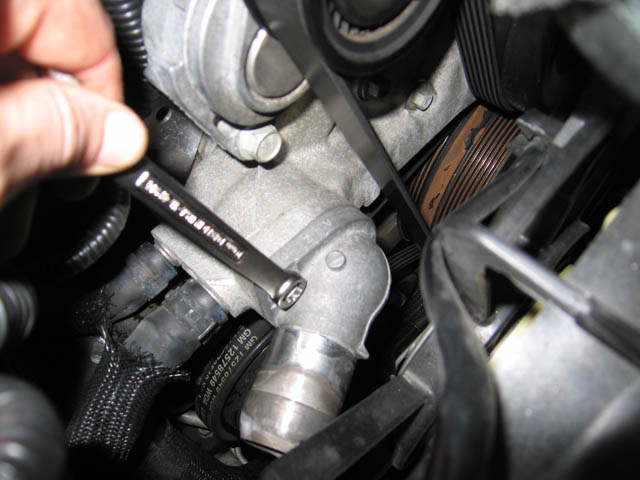Addressing Auto Problems: Fixing Your Thermostat
Having an auto that constantly overheats is not only a nuisance, it also causes severe damage on your engine, radiator and the numerous other components surrounding them. While most drivers automatically come to the conclusion that it’s a radiator problem that’s causing the overheating (and yes, the radiator is the usual culprit behind this auto problem), other vehicle problems like a stuck thermostat can be the reason behind your dangerously hot and smoking auto.
What is a Thermostat and Why Do You Need It?
The thermostat installed in your car has a crucial task to fulfill-it is the auto part responsible for controlling the amount of water-coolant mixture that is released into your engine system, all depending on whether your engine is running warm, cold or extremely hot. When you start your car first thing in the morning, the engine is still cold. The thermostat signals your engine cooling system that no coolant is needed. But as you drive, the thermostat gives the go signal for the increased coolant flow, increasing and reducing the amount of mixture used depending on the situation.
So, Why Should You Worry When You Have a Stuck Thermostat?
A stuck thermostat means that your engine will not receive the right amount of antifreeze and water each time it’s needed. When this happens, the engine starts to heat up almost immediately, and overheating happens as a result of this.
What Could Cause a Stuck Thermostat?
There a number of reasons why your car’s thermostat could get stuck in a closed position. If you’re driving an auto that’s several years old, then expect your thermostat to fail eventually. An accumulation of debris and dirt could force your thermostat to remain closed even as you drive if you don’t exercise regular maintenance under your vehicle’s hood.
Should You Replace Your Thermostat?
If your auto is several years old and you think your thermostat is irreparably stuck closed, then by all means, replace your vehicle’s thermostat immediately. It shouldn’t hurt your wallet too much. There are some brands that sell more expensive variants if you’re willing to splurge, or if you don’t want to risk the quality of this auto part, even though most thermostats are priced at around $20 or less.
How Would You Know if it’s Time to Replace Your Thermostat?
If you have a thermostat that needs replacing is to have a constantly overheating ride where the radiator is still in mint condition, the simplest way to find out. However, if you want to make sure you have a stuck thermostat, check out the following low-tech tests to find out if your auto’s thermostat is operating properly.
Checking for a Stuck Thermostat: Test 1:
Please don’t try this test when you’re parked in a downhill slope. Don’t use this to test your hand brake’s power either.
Step #1: Prop open your hood and look for the radiator cap. If you have the radiator cap, then I suggest consulting your owner’s manual), (If you’re not sure.
Step #2: Remove the radiator cap. Please exercise extreme caution and as much as possible, don’t try this test immediately after a long trip.
Step #3: Engage the hand brake. This should prevent your auto from rolling.
Step #4: Try not to position yourself directly in front of the car. Even when parked in a level surface, it’s always best to exercise caution, so look for a cement block and put it in front of your rear tire to keep your auto from running you over.
Step #5: Start your vehicle and let it warm up.
Step #6: Check your water-coolant levels as your engine starts to warm up. There should be a drop in the level.
Step #7: There’s an incredibly high chance that your thermostat is stuck in the closed position if the water-coolant levels remain constant.
Step #8: Turn off the engine and replace your radiator cap.
If you don’t want to try out aforementioned steps, then here’s another test you can do:
Checking for a Stuck Thermostat: Test 2:
Step #1: Start your engine and let it run until it’s warm. , though don’t let it overheat
Step #2: When you think your engine is warm enough, shut it off
Step #3: Open the hood. If the engine is too hot since you’ll feel the heat emanating from your hood if it’s about to overheat, you should be able to tell. If this is the case, then let your engine cool and try again.
Step #4: Look for your radiator hoses. There should be two. Check for the top one first. It is usually made of rubber or a similar material, and is black in color. The topmost hose is usually connected to the top of your radiator using metal clamps at both ends.
Step #5: Touch the topmost radiator hose to check for its temperature. Is it warm? Is it starting to get too hot?
Step #6: Now look for the lower radiator hose. This auto part is usually connected to the bottom part of your radiator.
Step #7: Feel the lower radiator hose. Is it warmer than the upmost hose? Is it still cold?
Step #8: Compare the temperatures between these two hoses. Keep in mind that when operating normally, your lower radiator hose should be warmer than the top hose. If one hose is a lot warmer than the other, then it’s highly likely you have a stuck thermostat.””
If you do encounter this situation, then it’s best that you know how to address this auto issue as soon as possible.


0